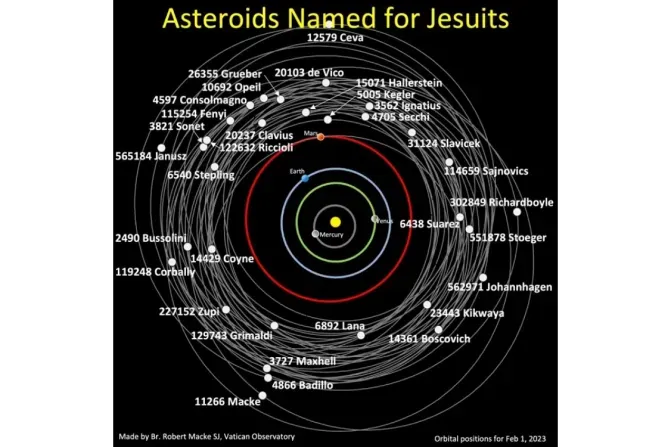Aboard the papal plane, 21 February, 2023 / 12:27 pm (ACI Africa).
The Vatican Observatory announced this week the naming of four newly-discovered asteroids after notable Catholics, including Pope Gregory XIII, who began the tradition of papal astronomers and observatories.
Christopher Graney, a scientist at the Vatican Observatory, said in a press release that the Working Group for Small Bodies Nomenclature (WGSBN) of the International Astronomical Union published its latest batch of named asteroids in early February.
The newly-named asteroids include “560974 Ugoboncompagni,” which honors Ugo Boncompagni (1502–1585), Pope Gregory XIII. Gregory commissioned the astronomer Father Christopher Clavius, SJ — who also has an asteroid named after him — to reform the calendar in the 16th century, leading to his namesake Gregorian calendar, still in use today.
The other three names honor Jesuit priests who work or worked at the Vatican Observatory.
“562971 Johannhagen” honors Jesuit Father Johann Hagen (1847–1930), director of the Vatican Observatory from 1906 to 1930. “551878 Stoeger” honors Father Bill Stoeger, SJ (1943–2014), a cosmologist and theologian at the Vatican Observatory. Finally, “565184 Janusz” honors Jesuit Father Robert Janusz (b. 1964), currently on the staff of the observatory.








